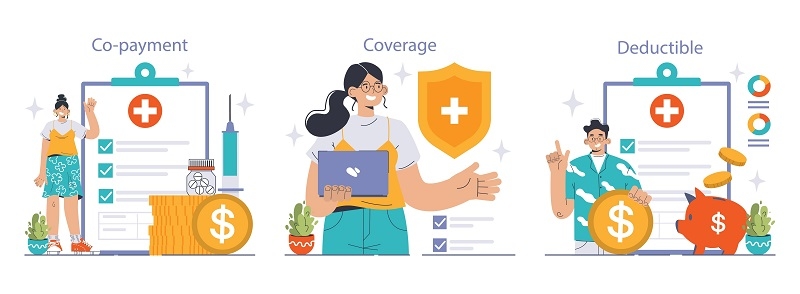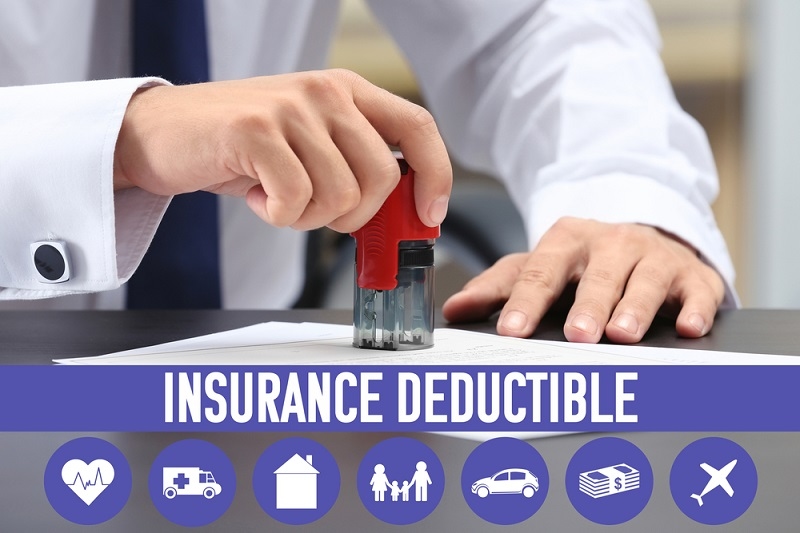
Insurance is your wallet's cushion—but with strings, at least when you need to pay deductibles. Regardless of whether you're facing a fender accident, a surprise visit to the ER, or damage from a storm to your house, you're going to be confronted with an out-of-pocket deductible before your policy pays out. That's why it makes sense to know how to plan for deductibles—it's not just savvy, it's a must.
In this, we'll take you through all you need to know about budgeting for these expenses—from budget for deductibles, home insurance, to budget for medical deductibles—so you're never surprised. With careful planning, even emergencies can be managed.
Insurance deductibles can range from a few hundred to several thousand dollars. They’re not just numbers—they’re obligations that can hit hard if you’re not prepared. Many families live paycheck to paycheck, making it tough to cover these costs on short notice. Whether it's a budget for deductibles auto situation or a medical emergency, a lack of preparation can result in debt, delayed care, or compromised coverage.
Having a transparent and consistent plan of how to budget for deductibles each month means that you won't be forced to use savings or go into debt when something comes up unexpectedly.

Deductibles differ based on the kind of insurance you have. Knowing the specifics can assist you in setting an honest and efficient budget for deductibles.
A deductible home insurance budget is important, particularly if you reside in a region with frequent natural disasters. Home insurance tends to have higher deductibles, especially for flood, hurricane, or earthquake coverage. Some even charge a percentage of the value of your home instead of a flat fee, which can be an enormous deductible.
Pro Tip: If your house insurance deductible is 2% on a home that costs $300,000, that's $6,000 out-of-pocket before insurance pays a dime.
Deductibles medical budgets should be top of mind in your planning, especially if you possess a high-deductible health plan (HDHP). You could be paying thousands of dollars annually for the cost of care before your insurance begins paying anything.
Health Savings Accounts (HSAs) can be an effective means of saving specifically for these costs. Contributions are tax-deductible, and the money can grow tax-free.
As part of your budget for deductibles auto, think about the kind of coverage: collision, comprehensive, or liability. Collision and comprehensive plans typically have deductibles between $250 and $1,000. Having this amount set aside means you can have your car fixed promptly.
Building a monthly strategy is your best defense against financial surprises. Here's the process to keep tabs on your deductible responsibilities.
You will first want to make a list of all of the insurance policies you have: home, renters, health, auto, etc. For each policy, you will want to write down the deductible amount. If you are unsure of your deductible amount you can either look in your insurance documents or call your insurance provider directly.
Total up all your deductibles. If your deductible on health is $1,000, auto deductible is $500, and your home insurance deductible is $2,000, you have a total exposure of $3,500.
It makes sense to create a dedicated emergency fund budget for deductibles. Keeping it in a high-yield savings account allows easy access during an emergency but still earns some interest.
Recommended Goal: Save at least the overall deductible amount from Step 2.
Now, simply divide your intended annual deductible by 12 (or 6 if you want to save sooner). In this example, $3,500 ÷ 12 = $292 per month. Add that amount to your budget as a recurring line.
Bonus Tip: You can make your savings automatic so the money is transferred each month with little effort on your part.
Your situation and deductible amounts may change over the course of a year. Establish the habit of reviewing your budget for deductibles every 12 months (or when you make a change or renewal for insurance policies).
To help you come up with a fool-proof budget for deductibles, home insurance, consider these suggestions:
Having some of your emergency fund identified for home repairs, or ensuring you have some liquid cash available for claims, makes it reasonable to expect you won't be scrambling for money after storm damage or a ruptured pipe.
Deductibles apply easily to health-related expenses. Below are some tips to remember and apply:
Auto accidents can happen at any time. If you work along with that condition and avoid penny-pinching:
When you start budgeting for auto deductibles, take into consideration the age, value, and usage of your car.
A healthy, financially planned emergency fund available for deductibles is less about saving costs and more about easing your mind.
By maintaining a fund, you have sufficient confidence to move quickly in an emergency; whether it be a medical issue or burst pipe at home.
Balancing home, medical, and auto deductibles? Here's how to prioritize:
A tiered deductible budget will keep you covered in every direction, without breaking the bank each month.
Most people think they will never have to pay out-of-pocket. Always read your policy documents and know your deductible costs.
Plan changes are often accompanied by deductible changes. Reset your emergency fund after each insurance change.
Keep your deductible funds apart. Combining it with vacation or checking savings can lead to the funds being accidentally spent.
Budgeting for deductibles is quite possibly the biggest change, a lifestyle choice that puts you in control of your money. You are not only prepared for an emergency, but also creating a plan to enable you to remain financially stable during uncertain times.
From budgeting for deductibles, home insurance, budgeting for deductibles medical and auto insurance, to budgeting your monthly bills, and having a large emergency fund can all help you be more ready for whatever life decides to throw your way.
This content was created by AI